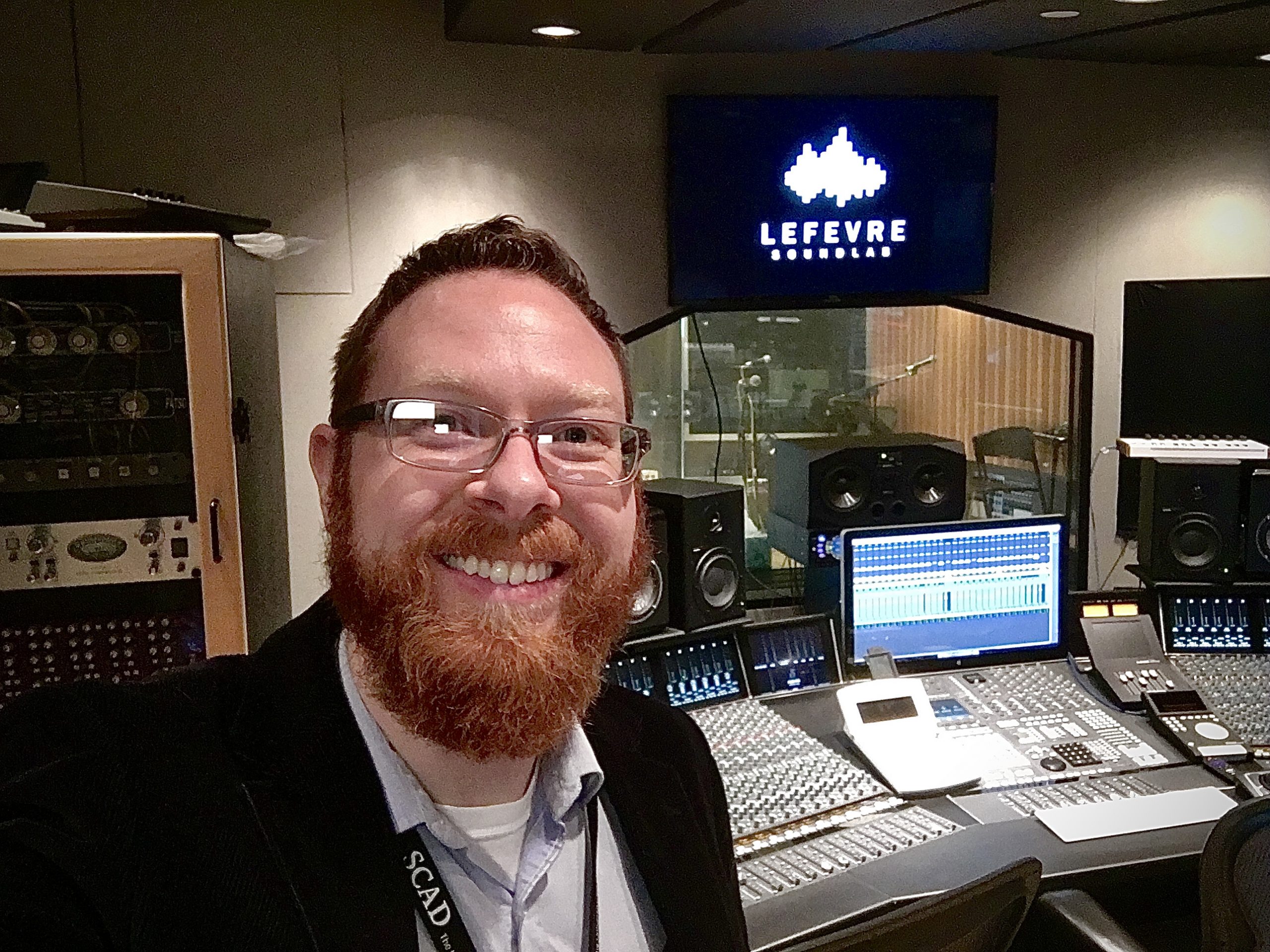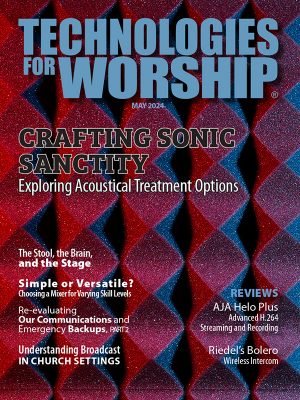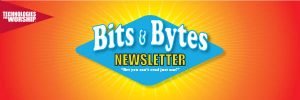
Mount Paran Christian School is located right on the border of Kennesaw and Marietta, just a bit northwest of Atlanta, Georgia. This devout non-denominational Christian school educates students from Pre-Kindergarten through twelfth grade and has weekly gatherings in their theater where the Word is preached and the student body can musically worship together.
The school is blessed to have an extremely well equipped Arts building called the Murray Arts Center, and one of the key features of the MAC is the Kristi Lynn Theater (KLT). The KLT facilitates concerts for band, orchestra, choir, and dance, as well as performances from the drama department. Staff and student meetings are held there as well, but three weekly chapels are central to the student experience of attending Mount Paran.
A Brief History of the Space
The KLT’s design originally enabled the space to be a 5.1 mixing environment rather than a conventional mono, stereo, or LCR mixing space. Instead of using a traditional Front of House mixing console, the designers utilized a broadcast console to facilitate the extra mixing channels, specifically the Solid State Logic C200. For room calibration, a BSS London Blu-80 and London Blu-32 distributed the surround sound mix with EQ, time delays, limiters, and summations to Camco Vortex 6 amplifiers for the Nexo line arrays; Crown CTs 8200 amplifiers for the fourteen Bohlender-Graebner surround speakers as well as four SLS balcony cabinets, eight SLS under-balcony cabinets, and six SLS front fill cabinets; and Crown I-T4000 amplifiers for the eight EAW subwoofers.
Upgrading the Sound System
The C200 and London Blus served the space well from 2007 to 2023, but during the 2022-2023 school year the staff determined that it was time to update to a new console. Major considerations for choosing a new board included price point, improved utilization of the mixing capacity of the theater, more available channels, a smaller footprint in the tech booth, processing available for room calibration, and an intuitive interface for students and guest audio engineers. The SSL S300 best met all of the criteria and was installed during the Summer of 2023. After lugging four Mackie SA1232Z cabinets into the lighting catwalks for elevation speakers, the KLT became a 7.1.4 immersive live mixing environment.
The S300 is one of several consoles that utilizes the SSL Tempest Engine. I’m blown away by the flexibility of what the Tempest Engine can handle. Our license enables us to have 256 processing paths going at a time, which is a huge step up from the 128 channels and dozen or so aux sends the C200 was limited to. Through its summation mixers and aux sends, the S300 also handles all of the calibration for the speakers in the room.
It’s genuinely fun to mix in this space and I’m so glad that this console is less intimidating than the previous one. Our students now volunteer to mix our chapels and they are knocking them out of the park.
SSL sound paired with the Tempest Engine’s intuitive interface has empowered them to mix a thirteen piece band in 7.1.4 in front of all of their teenaged peers with none of the retries or undos they get in our recording studio. I think they’re more confident mixing immersively than I was mixing in stereo at their age.
Mixing Methodology
Shifting from mixing in stereo to surround to immersive opens up a lot of creative possibilities. I definitely tried some things that didn’t work, but we’ve settled into a methodology that seems to meet the expectations of our students and faculty. I keep the ‘Kick In’ in our center line array and have the ‘Kick Out’ phantom center and in the subwoofers. This gives us a clear, punchy middle with a boom that expands outward.
Snare top and bottom go in the center as well and the toms are panned left to right according to their positions on the drum set. The ride goes on the left wall, the hi hat goes on the right wall, and the overheads go up in the ceiling, giving us a sort of arch over the congregation.
I process the bass guitar on two channels, putting the low frequencies in the center line array (avoiding the low end of the ‘Kick Out’) and in the sub woofers, and the high frequencies go on the side walls. Vocals and acoustic guitars go in a stereo spread up front, electric guitars go up in the ceiling, the stereo piano goes on the side walls and the stereo synth pad goes to the rear wall.
The whole band shares three reverbs. We’ve got a quadraphonic reverb in a TC Electronic System 6000 for front left, front right, left side, and right side. Then we’ve got a stereo reverb using the same algorithm in the System 6000 with a longer tail on the back wall, and an Eventide Eclipse ping-pong tap delay feeding a Lexicon PCM 91 reverb up in the ceiling. Rather than using the reverb to give a sense of depth in a stereo mix making things sound far away, this approach puts us in a space with the music. We’re in it, it travels through us to the back, and it bounces around our rafters for a moment or two.
Outcome
The approach to upgrading and mixing in the KLT has primarily been driven by a sense of stewardship. It would be cost prohibitive for most ministries to buy and install so many speakers but when our school purchased this building it had already been outfitted with the majority of equipment we’re still using.
Provided the system is calibrated well, a larger quantity of speakers helps bring down the volume each speaker has to produce for the congregation to hear clearly, resulting in very little distortion from the drivers and a consistent listening experience for most content.
Immersive audio continues to grow as an accessible format, and we’re extremely fortunate to be able to participate in that format in this space and use it to enhance every type of production we facilitate.
Marshall Young is Mount Paran’s audio engineer and has a background in live and television audio. He has a B.A. in Media Communication from Asbury University and an M.F.A. in Sound Design from Savannah College of Art and Design. Immersive audio and infrasound are two of his favorite subjects to discuss and teach.




